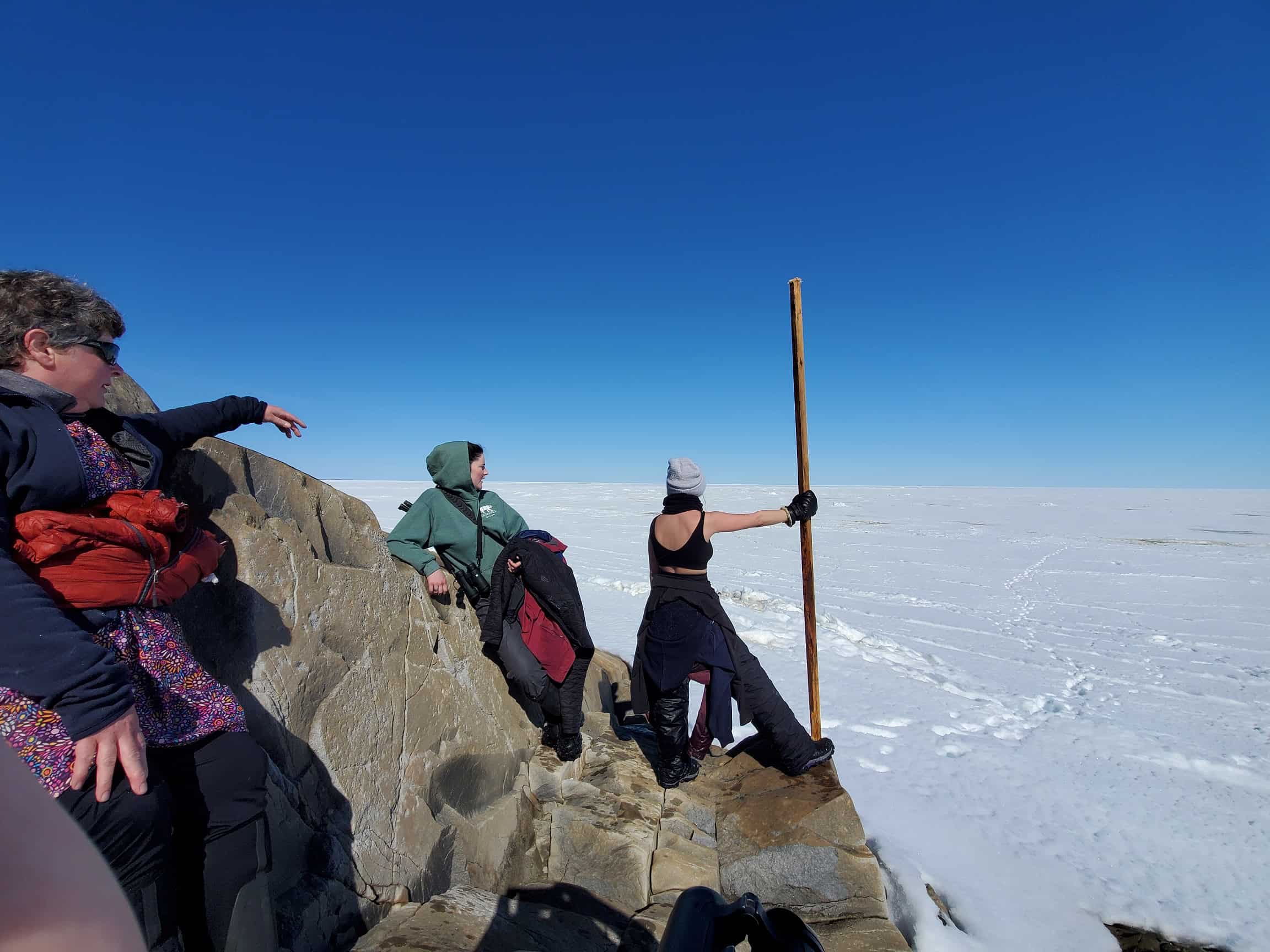Over our travels on tundra, water, ice, and through boreal forest, we have learned some simple rules to keep things running smoothly as a team of research technicians. While they are all guidelines, and a bit tongue in cheek, each one has a story behind it and offers a glimpse into our daily thoughts and lives. Please enjoy our “Rules for Fieldwork”.
1. Your pants will not stay clean. The rest of your clothes aren’t safe either.
Laundry machines provide an essential service for field technicians, and trying to keep our wardrobes for every weather condition clean. Mud, blood, urine, dust, grass stains, pond water, salt; the moment you walk out the door you will be filthy. For those of us that abandoned hope in staying clean; don’t ask us how long we’ve been wearing our outfits.
2. Always bring snacks.
Picture this: you’re on hour 12 of the workday (the 5th such day in a row), about 50km from the office by machine. You’re tired, you’re field partner is hangry (a general grumpiness due to lack of food), and you’ve been physically active all day. If you want to keep your wits about you and get back in a good mental state, you need a lot of snacks to get through the day. Snack pockets or bags are recommended.
3. Don’t trust what you’re standing on.
This is less ominous than it seems. Wetlands often have foot sized holes in the bottom, or grass growing on top of meter deep mud. Snowpack can be hard, but place your weight in the wrong spot and through the freeze/thaw layer you go! Sea ice can soften in the sun, or have the underside eroded by the tide. Seaweed piles can look firm but happily remove your boot off. Rocks are slippery, and can tip under your weight. Overall, be careful where you stand.
4. No data is worth dying for. Make good decisions.
We work in polar bear country (and black bear, and grizzly bear), far away from sources of help, in every type of environmental condition you can think of. Cold with windchill to -50C, heat to +30C, rain, snow, biting insects, and operating equipment over rough terrain.
Sometimes factors combine, like a fog bank rolling into the bay when bears are around, which makes a game of “spot the white polar bear in the 100m fog” (we don’t go out in those). As a team, we have a lot of first aid, survival, and wilderness skills between us to make the risks we take for collecting science data acceptable. But the main tool is our risk assessment/judgement; this rule is a reminder that the data can be collected another day as long as we get home safely.
5. Bring a spare of everything (triple is even good sometimes).
Everything breaks, gets dropped in the snow, or just gets forgotten on a desk. When we go out we often check with each other that we each have the equipment needed, and maybe a 3rd one on the machine. Spending 4 hours bouncing over the tundra to service a weather station and record snow conditions just to find you’ve forgotten something (e.g. a datasheet) wastes a lot of time. Be prepared for things to break.
6. Always bring a sharpie, even if you don’t think you need a sharpie. A pencil too.
There are lots of little things to remember, and quick notes of where something is from or where it’s meant to go can save a lot of head scratching or lost data later on. Also that data sheet is only good if you can write in it. The pencil pocket is usually opposite the snack pocket.
7. Put sunscreen on….just do it.
For the fair skinned or dark, full days outside take their toll. The summer sun, reflected on the water, or the winter sun reflected on the snow. Follow this rule or come home a little crispier than you left.
8. It may look warm and sunny outside…its not.
Weather is variable at best, and it may be warm at the moment, but when the wind shifts it will drop back to the single digits. Even if it IS warm, travelling on a machine adds a windchill. Or it’ll start raining. Or snowing. It’s possible to dress comfortably for most weather conditions. Be prepared for a less than warm workplace.
9. Extra kerflappy.
A patent pending term, a Kerflappy© is any small, loose, pivoting and/or flapping part that for reasons unknown is vital to operation of the equipment it is attached to. It usually refers to a small metal flap on the back of a snow machine that attaches the sled or komatik pulled behind the machine, but can also refer to a pin, rubber seal, lid, etc. Due to their pivoting or “flappy” nature, they often break or are lost. It is recommended to always have a spare (or two).
10. Get comfortable peeing in front of your field partner. P.S. pee downwind!
Long days in the field lead to the natural question; where do you pee? Short version is, anywhere that isn’t a study site. Travelling during winter you often don’t want to go off the packed trail, and having a windbreak in the form of your machine is appreciated. So pop a squat or send a stream near your snow machine; there isn’t much else to provide cover on the tundra. Also peeing downwind will help with avoiding rule 1. It does mean you’ll both/all be in the same side of the machines though. So as the rule says, get comfortable peeing in front of your field partner. We all have to go, and get on with our day.
These are some of our many #rulesforfieldwork; if you’re a field technician and have some to add we’d love to hear them! We’ll read them during snack breaks.

